The concept of personal branding has been around for many years but used to be something only high earners and successful entrepreneurs embraced. The business world was changing in that respect with the concept becoming far more wide-reaching and Coronavirus has hastened that change. It’s never been more important to understand what your personal brand is and to make sure you’re conveying that message to your audience.
The rise of social media has made personal branding far easier for us all to attain than ever before. However, whilst many of us may appreciate the requirement for a personal brand, the how-to is often challenging, particularly for those who are uncomfortable with using technology. Here, we aim to help you understand what personal branding means along with the how and the where to begin marketing your own unique brand.
The first step is to have a look at where you currently appear on the internet. Type your name into Google and see what comes up. Click on the tabs at the top to select Images so you can also check to see the photographs of you available for public consumption. This exercise can produce some unexpected results! Check where those images are located – hovering over the image will show you if it has been scraped through from a social media site, a blog, a newspaper, and so on. You may find there are images you do not wish to be in the public domain.
Solution: If you do not want that image to appear publicly, you have the right to apply to the site’s manager and ask them to remove it.
Probably the bane of every brand consultant’s existence, many people leave their Facebook profiles open to the public rather than restricting content to ‘friends’ or even ‘friends of friends’. As a result, many an inappropriate night out is out there, on view for all – including prospective employers and clients. You may also discover someone else has tagged you in an image that is less than appealing. Let’s be clear – we’re not saying you can’t use Facebook, however, we are suggesting you keep it for your private life – and keep it private.
Solution: Facebook allows you to control who can see your posts and tag you in photos. Investigate your settings and restrict access. Ideally, don’t accept connection requests from people you barely know – apart from being a security risk, you never know what they’re going to tag you in! Go to your settings, select Timeline and Tagging and manage your privacy from here, including ‘review’ prior to allowing a post you’ve been tagged in from appearing on your timeline.
When it comes to Twitter, don’t fall into the trap of believing tweets don’t last a lifetime. Their efficacy from a business point of view may be counted in minutes but the wrong tweet will return to haunt you as many a celebrity will attest to!
Solution: If you don’t have anything nice to tweet, don’t tweet! Review historic tweets by going to your Profile page and clicking on ‘My Tweets’. Have a scroll – if you spot anything controversial, hit delete!
LinkedIn is a powerful tool for building a solid, professional personal brand. Indeed, many potential employers and clients will probably be using it for a similar effect. Do not fall into the trap of assuming everyone understands what your job title means when it comes to role and responsibility. This impedes your progress – if people don’t understand what you can do, they’re unlikely to seek out your services. Do not fall into the trap of selecting the photo from the last wedding you attended, complete with a fascinator and extravagant jewellery, or morning coat and boutonniere: this is a professional platform for growing your network and impressing potential clients.
Solution: Ensure your profile section is completed. Upload a clear, business-oriented photograph – not a distant photo of you attending a wedding nor a trout pout travesty! Your photo should be recent, so people can recognise you when you meet them in real life. It should be relatively simple, with nothing fussy or distracting in the background. Add in your contact details so connections may easily get in touch.
When building your personal brand, decide what it is you stand for, what your core values and ethics are. Once you’ve defined these, you’ll be better able to select clients and prospective employers who share those values. If lifelong learning and continuous improvement is important, say so, give examples of how you embrace that. If you’re struggling to define your values, take examples from influencers you admire. Incorporate them into your brand, on your website, and on your social media pages.

